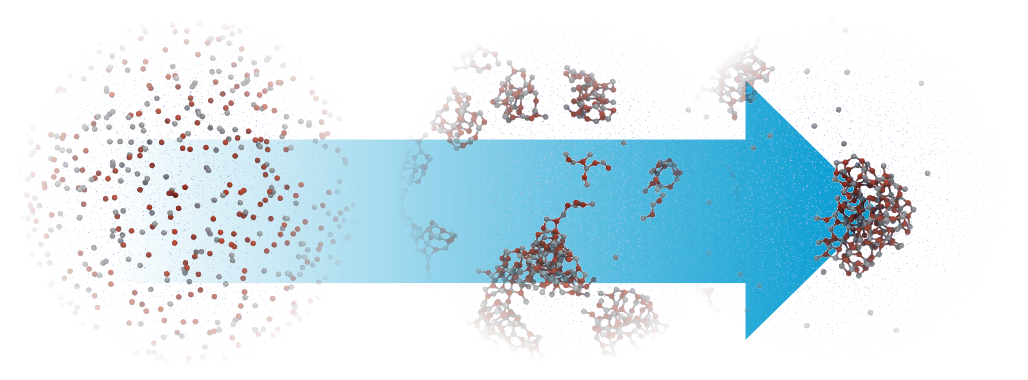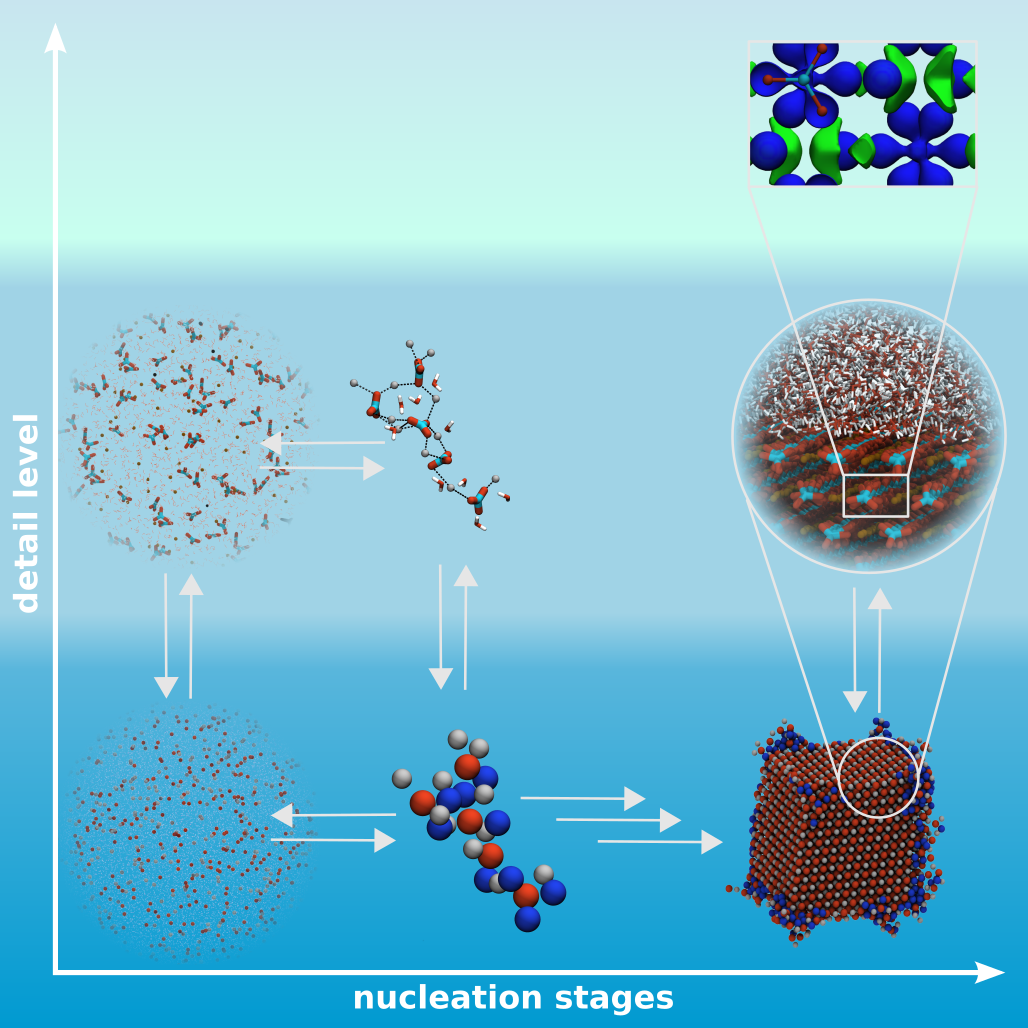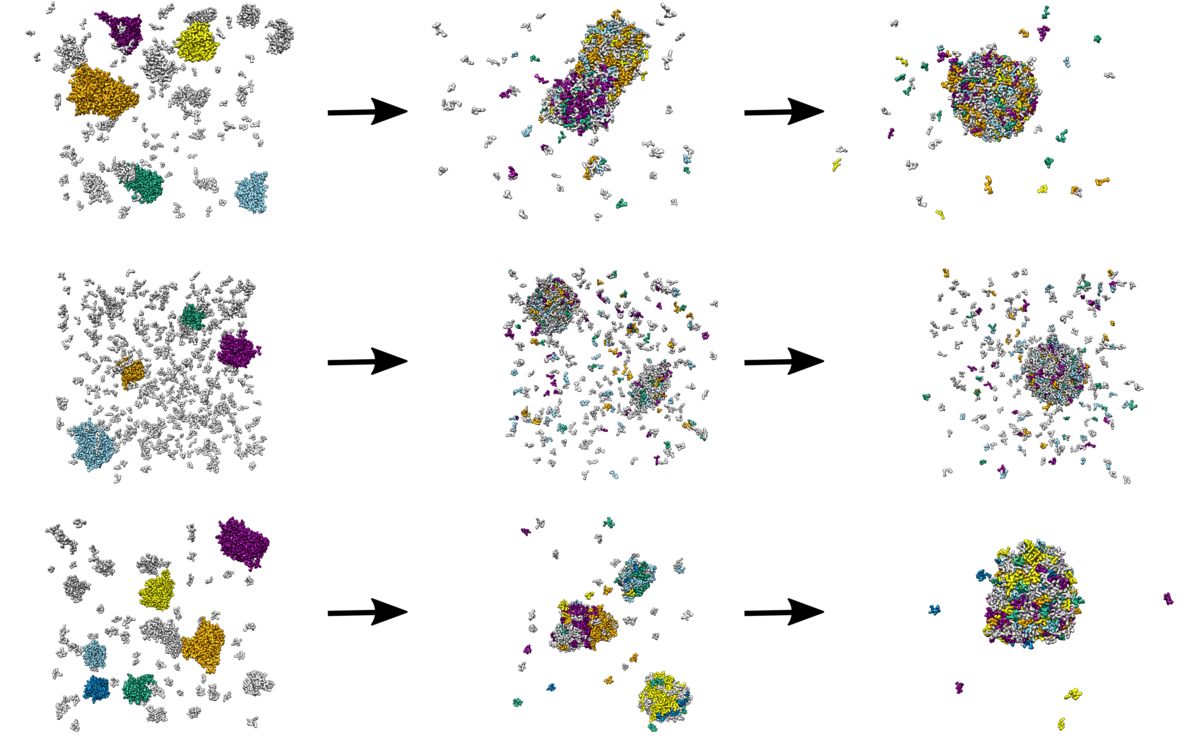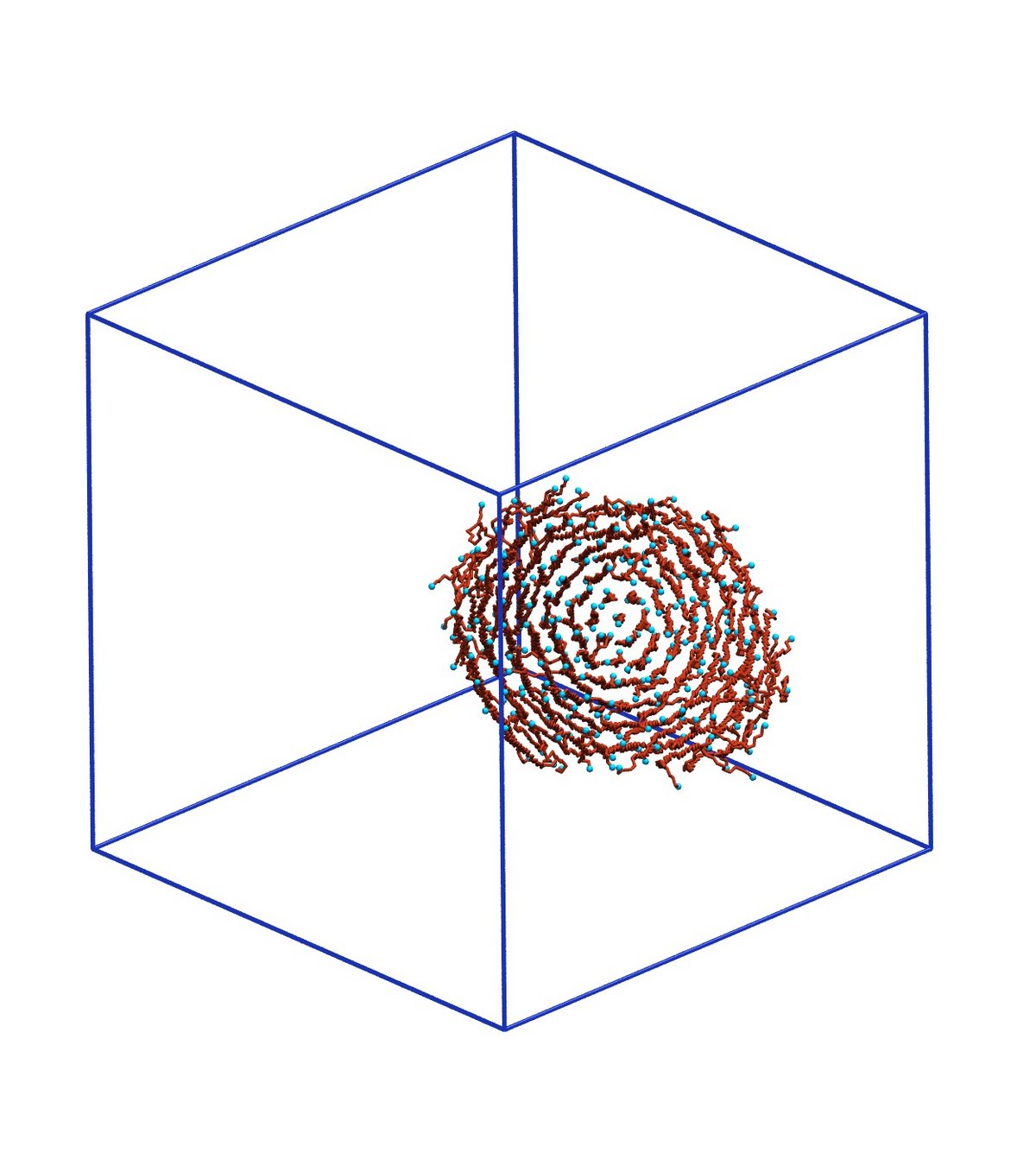Nucleation and aggregation

The nucleation and aggregation of atoms and molecules as well as the crystallization and growth of nuclei is central for many processes in living organisms and the inanimate world. Molecular dynamic simulations can provide a suiting tool to investigate the mechanisms in early stages of these processes directly or later stages in combination with advanced sampling methods. In this context, we are looking at aggregation and nucleation process of peptides and minerals.

Nucleation as well as crystallization and growth of nuclei are important steps in numerous processes and applications, found in the inanimate and animated world. It could be shown that these processes can follow different pathways, classical and non-classical nucleation, which can be addressed by MD simulations. However, the different stages of these processes are on complete different time and size scales. Therefore, studies on different resolution levels, coarse-grained, atomistic and quantum mechanic levels, are needed and have to be linked to give a insight view in the underlying mechanisms.

Development of new well ordered, functional biomaterials based on the underlying principal of self assembly has immense application in nanotechnology, nanomedicine and tissue engineering. Peptide based nano-materials are not only biocompatible but also their properties can be altered easily by slight changes in environmental conditions and/or side-chains of amino-acids. We are doing multiscale simulation study on many interesting peptides systems that exhibit different morphologies upon slightly altering the primary sequence of peptides.
J. Chem. Theory Comput. 2019, 15, 2, 1453–1462 doi

In cooperation with experimentalists of the research group of Prof. Dr. Stefan Mecking, functionalized polymer nanocrystals are simulated on atomistic and coarse-grained resolution levels (ACS Macro Lett.2013,2,125). Of particular interest are formation and stability of those nanoparticles, as well as their appearance.
